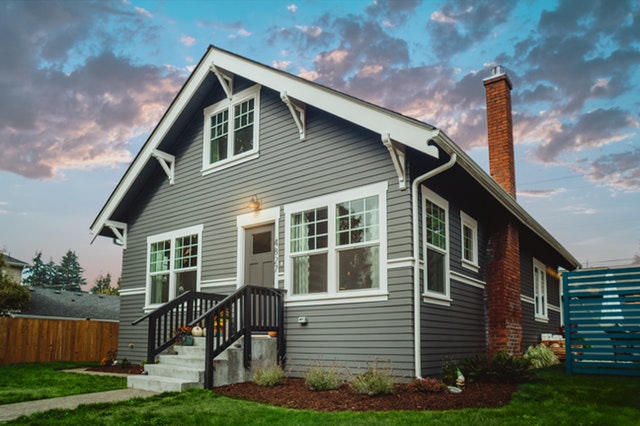FOMC Statement: Fed Holds Steady On Its Interest Rate Range
 The Federal Open Market Committee of the Federal Reserve announced its unanimous decision not to change to the current target federal funds range of 1.50 to 1.75 percent. The committee’s customary post-meeting statement said the decision not to change the Fed’s target range for federal funds was based on factors including a strong labor market, moderate economic growth, continued job growth, and low unemployment.
The Federal Open Market Committee of the Federal Reserve announced its unanimous decision not to change to the current target federal funds range of 1.50 to 1.75 percent. The committee’s customary post-meeting statement said the decision not to change the Fed’s target range for federal funds was based on factors including a strong labor market, moderate economic growth, continued job growth, and low unemployment.
Economic readings reviewed prior to the FOMC meeting held Tuesday and Wednesday supported the achievement of the committee’s dual mandate to achieve maximum employment and maintain price stability.
According to the post-meeting statement issued on December 11, FOMC members consistently review incoming global and domestic economic news to determine if the Fed’s monetary policy should be adjusted. Chair Powell signaled that the federal funds rate may not change in 2020, but repeated the FOMC’s frequently-repeated caveat that monetary policy is subject to change as world news and economic conditions may warrant.
Expected And Realized Economic Conditions Contribute To Fed’s Monetary Policy
FOMC members reviewed their expectations of economic performance and compared them with actual readings in evaluating economic performance as connected to the Federal Reserve’s dual mandates of maximum employment and price stability. Low unemployment and overall inflation readings near two percent supported the Committee’s decision not to change the target range for the federal funds rate.
Fed Chair Expects Strong Economy To Continue
Federal Reserve Chair Jerome Powell said in a scheduled press conference that he and his colleagues in the Federal Open Market Committee are confident that strong economic conditions will prevail over the next few years. Mr. Powell said that the Fed expects the national unemployment rate to remain near a 50-year low at approximately four percent; he said that the national unemployment rate is expected to remain low in the near-term. Chair Powell said that the economy has remained strong for 11 years; this is the record for the longest run of positive economic conditions.
Inflation remains below the Fed’s objective of 2.00 percent; Chair Powell said that the overall inflation rate averaged 1.30 percent, but core inflation, which excludes volatile food and energy sectors averaged 1.60 percent. Chair Powell said that the core inflation reading was a more reliable indicator of long-term inflation.
Jobs and wages increased in lower to middle-income communities, but the business and manufacturing sectors weakened. Mr. Powell suggested that the Fed would leave interest rates unchanged in 2020 unless economic and news events indicate that a change in the current monetary policy becomes necessary.

 Case-Shiller’s National Home Price Index showed 3.20 percent national home price growth in September, which was 0.10 percent higher than August’s reading of 3.10 percent. The 20-City Home Price Index showed the continued impact of exorbitant home prices on both coasts as home price growth slowed in high-cost areas and smaller markets experienced upward pressure on home prices as home buyers were seeking affordable homes.
Case-Shiller’s National Home Price Index showed 3.20 percent national home price growth in September, which was 0.10 percent higher than August’s reading of 3.10 percent. The 20-City Home Price Index showed the continued impact of exorbitant home prices on both coasts as home price growth slowed in high-cost areas and smaller markets experienced upward pressure on home prices as home buyers were seeking affordable homes. Case-Shiller’s National Home Price Index reported U.S. home prices grew by 3.20 percent year-over-year in July; as compared to year-over-year home price growth 0f 3.00 percent posted in June. Cities with the highest rates of year-over-year home price growth were Phoenix, Arizona with 5.80 percent year-over-year home price growth. Las Vegas, Nevada had 4.70 percent year-over-year home price appreciation and Charlotte, North Caroline bumped Tampa, Florida from the top three cities with home price appreciation of 4.60 percent. Tampa, Florida posted 4.50 percent year-over-year home price growth in July.
Case-Shiller’s National Home Price Index reported U.S. home prices grew by 3.20 percent year-over-year in July; as compared to year-over-year home price growth 0f 3.00 percent posted in June. Cities with the highest rates of year-over-year home price growth were Phoenix, Arizona with 5.80 percent year-over-year home price growth. Las Vegas, Nevada had 4.70 percent year-over-year home price appreciation and Charlotte, North Caroline bumped Tampa, Florida from the top three cities with home price appreciation of 4.60 percent. Tampa, Florida posted 4.50 percent year-over-year home price growth in July. The National Association of Home Builders Housing Market Index shows steady builder confidence in housing market conditions. September’s index reading of 68 was one point higher than August’s reading. Any reading over 50 indicates that most home builders surveyed view housing market conditions as favorable. August’s original index reading was adjusted upward by one point.
The National Association of Home Builders Housing Market Index shows steady builder confidence in housing market conditions. September’s index reading of 68 was one point higher than August’s reading. Any reading over 50 indicates that most home builders surveyed view housing market conditions as favorable. August’s original index reading was adjusted upward by one point. Don’t panic, a looming recession may be good news for those wanting to sell their homes. The experts say this recession may happen in 2020, so there is still plenty of time to make plans for how to deal with a potential economic downturn.
Don’t panic, a looming recession may be good news for those wanting to sell their homes. The experts say this recession may happen in 2020, so there is still plenty of time to make plans for how to deal with a potential economic downturn.